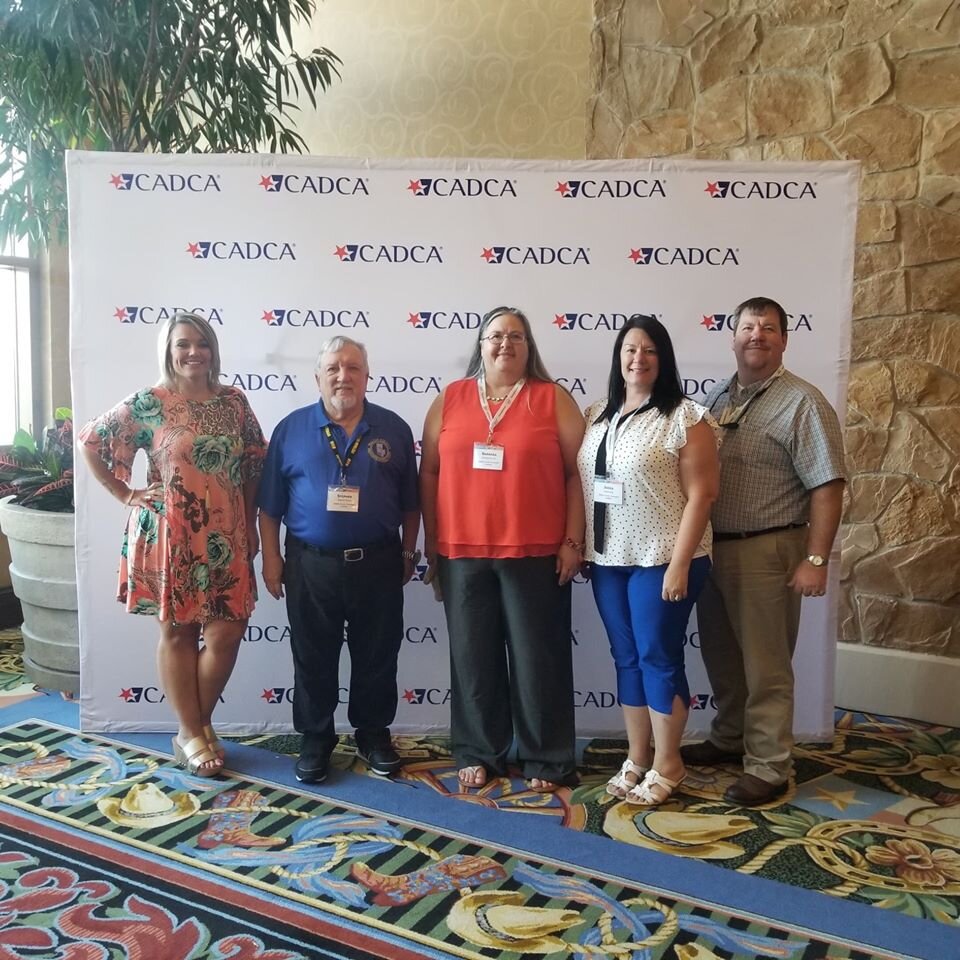Earlier this year, six members of the Walton County Prevention Coalition were able to attend the CADCA Mid year training in Dallas, Texas. This conference provides a great opportunities for prevention leaders to learn from the best in the nation and gain access to new materials and resources being used around the country.
At the training, there were a few sessions that stood out to me and I wanted to take the time to share some of the resources we learned about with you. We hope to implement some of these initiatives in our community and hope that parents will utilize some of the resources provided to start conversations with their children and peers.
The Power of Prevention:
This session brought the quote from Fredrick Douglas to mind for me, “it is easier to build strong children than to repair broken men.”
Perception influences behavior and comes into play when an issue is personal to you. Why do you think we have all the international manipulation of marketing that surrounds us every day. We are told products are good and then we later find out there are bad side effects and harms. The data shows Teens perceive others are using drugs and alcohol, but in actuality most teens are not engaging in substance use according to the Florida FYSAS. As the perception of harm decreases teen marijuana and alcohol use increases. Most kids want to succeed, have great jobs and lives, they do not want to take the risk of messing up their future.
#NotinmyHouse
In Walton County most kids report not using alcohol. But would you have guessed that 60.1% of Walton County High Schoolers that reported recent alcohol use said their usual drinking location was their home?
During the NOT in my house presentation community members learned underage drinking is NOT just a minor problem and learned about what it means to be a Social Host.
A Social Host refers to someone who hosts a party or event where alcohol is served on property they control. Social Hosts can be held responsible for these parties if underage people are served, regardless of who provides the alcohol. Teen parties are a primary setting for underage drinking, for high school and college students, and high consumption of alcohol and binge drinking.
Underage drinking is also very much an adult problem. Often times, adults are the ones purchasing alcohol for those under 21, looking the other way when teens talk about their drinking exploits, and/or hosting teenage drinking parties in their homes. One of the best ways to prevent underage drinking is to treat youth like youth and keep them away from adult type activities that include alcohol. Holding adults responsible for underage drinking parties is a proactive step for concerned communities. We need to reduce the social access that youth have to alcohol by raising awareness with family friendly events and parties that do not include alcohol.
Youth report obtaining alcohol through social means, such as their home or someone else's home. Such as from parents (with or without consent), older friends or siblings, relatives, or other adults.
Youth report drinking at house parties, at home, in rural areas/parks, or other private property such as condos or apartments.
The community has a misconception that parents accept underage drinking in their homes, but most do not.
The community has a misconception that hosting parties at home is a way to mitigate potential consequences related to underage drinking. But is isn’t, it is enabling alcohol use underage.
The Forgotten Link: Drug and Alcohol Use and Academic Performance
It was reported that 4,300 children under 16 start drinking every day. This is the equivalent of 143 classrooms per day of new underage drinkers.
There are more places to buy alcohol in our community than to buy school supplies.
Adolescents who use alcohol may remember 10% less of what they have learned than those who don’t drink.* Compared to nondrinkers, heavy and binge drinking students are more likely to say that their school work is poor and up to five times more likely to report skipping school.
More information can be found in these articles:
Alcoholism: Clinical and experimental research.
Marijuana: The Dangerous Truth:
This session examined the emerging impacts to public health and safety issues being experienced due to legalizing marijuana. Attendees were provided facts needed to accurately convey clear and consistent messages to their stakeholders when responding to questions concerning the legalization of marijuana.
Schools are being highly impacted by students’ failing grades, delinquent behaviors, skipping school, suspensions and expulsions. Young people who use marijuana are five times more likely to report feeling the need to also use alcohol or other drugs further impacting their education and life.
Legal marijuana businesses in Denver are heavily concentrated in lower income and minority neighborhoods and many counties have banned recreational marijuana due to the impact it has had on their youth.
Did you know that an average marijuana grow site of 1,000 plants uses 5,000 gallons of water a day. Where does all this water come from?
Understanding the Changing Drug Landscape and the Drug Enforcement Administration's Response
Last but not least, this training helped attendees fully understand the threat of opioids. It helped give us resources to begin to recognize differences of the opioid threat in a specific geographic location, increased understanding of opioid threat in general, and the basic understanding of challenges faced by law enforcement addressing current drugs of abuse and their impact on our society.
This mid -year CADCA training provided our members of our Coalition the opportunity to network with fellow prevention professionals and community leaders from around the world, to educate, inform, and inspire coalitions with best practices that will transform communities. We had an extensive range of training topics by dynamic trainers and are looking forward to bringing this information and some of these initiatives to Walton County!
My final note: Together, we can create safe, healthy and drug free communities.

